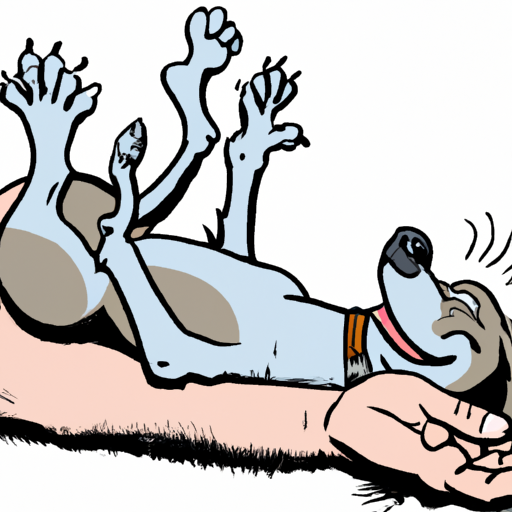As a caregiver, you possess the innate desire to provide comfort and care to those around you. When it comes to your furry friend, understanding their preferences for affection is key in fostering a strong bond. This guide delves into how dogs like to be pet, providing you with a comprehensive understanding of your pet’s needs.
1. Understanding Your Dog’s Body Language
Observing your dog’s reactions to different types of petting can offer valuable insights. Dogs often communicate through body language. Look out for wagging tails, relaxed posture, and contented sighs. Conversely, if they stiffen, move away, or show their teeth, it’s an indication that they aren’t comfortable.
- Wagging Tail: A relaxed, low wagging tail often indicates contentment.
- Relaxed Posture: If your dog leans into you or remains calm and relaxed, they are likely enjoying the contact.
- Negative Signals: Growling, baring teeth or a tucked tail are signs of discomfort.
2. Preferred Petting Zones
Just like humans, dogs have their preferred spots for affection. While each dog is unique, here are some common areas where most dogs enjoy being pet.
- Base of the Tail: Often referred to as the ‘sweet spot’, many dogs love a good scratch here.
- Chest: The chest is a favourite spot for many dogs, as it’s a non-threatening area to touch.
- Behind the Ears: The area behind the ears is sensitive and can be very enjoyable for dogs when pet gently.
| Preferred Petting Zones | Description |
|---|---|
| Base of the Tail | Often a dog’s ‘sweet spot’ |
| Chest | Non-threatening, comfortable |
| Behind the Ears | Sensitive, enjoyable area |
3. The Art of Petting
When it comes to petting, the ‘how’ is just as important as the ‘where’. Always approach your dog in a non-threatening manner, with slow, gentle strokes.
- Direction: Dogs prefer being pet in the direction of their fur growth.
- Pressure: Use gentle pressure. Too hard can be uncomfortable, too soft may tickle.
4. Building Trust Through Petting
Petting should be a bonding experience. It’s a chance for you to communicate your love and care for your dog. Always respect their boundaries and stop if they show signs of discomfort.
- Consent: Always make sure your dog is comfortable with being pet.
- Respect: If your dog moves away or shows signs of discomfort, respect their boundaries.
5. The Role of Breed and Personality
Different breeds have different temperaments and tolerances for physical contact. Similarly, a dog’s individual personality plays a role. Respect their individuality and adapt accordingly.
- Breed: Some breeds may be more receptive to petting than others.
- Personality: Each dog is unique and will have their own preferences.
Frequently Asked Questions
Q: My dog doesn’t like being pet, what should I do?
A: Every dog is different. Respect their boundaries and give them space. They may become more comfortable over time.
Q: Are there any areas to avoid when petting a dog?
A: Many dogs dislike having their paws, tail, or the top of their heads touched. Always observe your dog’s reactions.
Q: Can I pet a dog I don’t know?
A: Always ask the owner’s permission before petting an unfamiliar dog. Approach slowly and gently, letting the dog sniff your hand first.
Q: How can I tell if my dog is enjoying being pet?
A: Look for signs of relaxation such as a wagging tail, relaxed body posture, and a contented sigh or groan.



